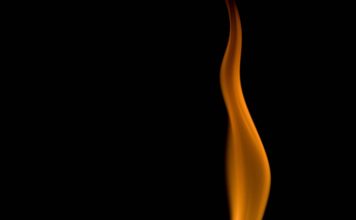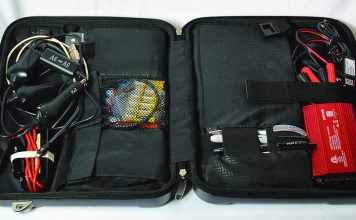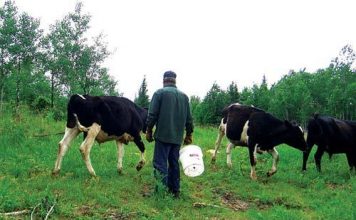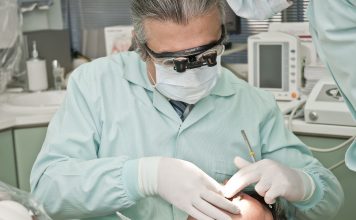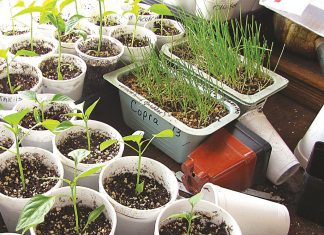| Issue #154 • July/August, 2015 |
In the wilderness, there may not be shelter to protect you from the elements. Even on a working homestead, physical exertion in hot weather can easily lead to heat stress, sometimes called “hyperthermia.” Hundreds of deaths are reported every year in the United States due to excessive heat, and it is especially dangerous when there is little or no access to modern medical facilities. It pays to take measures to prevent (as well as know how to treat) emergencies related to overheating.
What is hyperthermia?
Hyperthermia is defined as an excessive increase in body core temperature. It causes a spectrum of symptoms from relatively mild to life-threatening. More severe forms of heat-related illness include heat exhaustion and heat stroke, once known as “sunstroke.” Heat stroke is seen when the body’s temperature rises above 105° F and is a major medical emergency that is often fatal unless quick action is taken.
In addition to the air temperature, relative humidity plays a major part in the development of hyperthermia. Temperature and humidity are combined to make the “Heat Index” (HI), a measure of how the human body experiences hot weather. For example, an ambient temperature of 90° F combined with 90% humidity will feel like 106° F.
The human body cools itself by sweating. Sweat is then evaporated, which prevents overheating. In conditions of high humidity, however, the evaporation rate is reduced due to the vapor content of the surrounding air. This prevents effective removal of heat and increases the risk of heat stress.
Heat exhaustion
Mild to moderate heat exhaustion can present with a number of signs and symptoms that are important to recognize. These are mostly related to dehydration due to inadequate fluid intake. The loss of even 2% of your total body water content will begin to cause noticeable effects, worsening if it is not replenished.
Symptoms include:
- Sweating
- Rapid heartbeat
- Fatigue
- Confusion
- Dizziness
- Nausea
- Headache
- Fainting
- Muscle cramps
- Dark urine (a sign of dehydration)
- Elevated body core temperature (the level varies somewhat among individuals)
At this point, the victim will respond well if removed from the source of the heat (often, the sun). Stop any activities requiring exertion and get to a shelter or shaded area. Offer fluids, but only if the person affected is awake or alert; if not mentally “with it,” fluids can go down the windpipe instead of the esophagus and worsen the situation.
Remove any unnecessary clothing and prepare a cool bath or some cool moist compresses. With rest, you should see improvement relatively soon.
Heat stroke
Heat stroke is likely to occur once the body temperature reaches 105° F. Many symptoms associated with heat exhaustion may be seen with heat stroke, but some significant differences occur that are important to identify. Above 105° F, the body loses the ability to sweat as a method to evaporate heat. Instead of sweaty skin, you will most likely note dry skin that is very hot and flushed.
The signs that a victim has progressed to heat stroke include:
- Severe headache
- Nausea with vomiting
- Shortness of breath
- Loss of skin elasticity
- Lack of coordination
- Disorientation
- Loss of consciousness
- Seizures
- Shock (skin may seem clammy)
- Organ damage
- Coma
Quick action must be taken to lower body temperature before permanent damage occurs. Once the nervous system and the body’s organs are affected, the risk of long-standing effects increases exponentially.
Of course, if modern medical facilities are available, you should call emergency services immediately. Assuming, however, that you are in a remote setting or on the trail, you should proceed as when treating heat exhaustion, by removing the victim from the heat source, offering fluids, and immersing in a cool bath.
A cool bath may not be an option if you are on the trail, in which case a stream or other water body will work as long as you maintain close observation. If only a small amount of water or ice is available, make cold compresses with articles of clothing. These should be applied to areas where large blood vessels run close to the skin, such as the neck, armpits, and groin. Fanning the affected individual will aid in evaporation and dissipate heat.
Prevention
As with many medical issues, a little planning goes a long way. Make sure everyone is dressed appropriately for the weather. Loose, light clothing is best in the heat.
Keep an ample supply of sunblock (preferably at SPF 30 or greater). Avoid physical exertion in the midday sun by scheduling work sessions very early or very late in the day.
Provide your party with lots of fluids. Drinks that have electrolytes like sodium and potassium are preferable to plain water. About 6-8 ounces every 15 or 20 minutes will maintain a person’s hydration level. This can be assessed physically by observing the color of urine: the darker the urine, the more fluids are required. Avoid drinking alcohol or caffeine products; they can worsen dehydration.
Evaluate every member of your group for the ability to exert themselves in hot conditions. This especially applies to the very young and the elderly. Children don’t sweat as much as adults, which makes it more difficult for them evaporate heat off their bodies. Older folks and those with chronic medical conditions such as diabetes are also at increased risk.
Conclusion
You can’t stop the sun from rising, but you can take measures that will prevent trouble. A little preparedness will help keep things cool, even when it’s very hot.
Joe Alton is one of the authors of Amazon bestseller The Survival Medicine Handbook. For more than 400 articles on medical preparedness, go to his website at www.doomandbloom.net.









